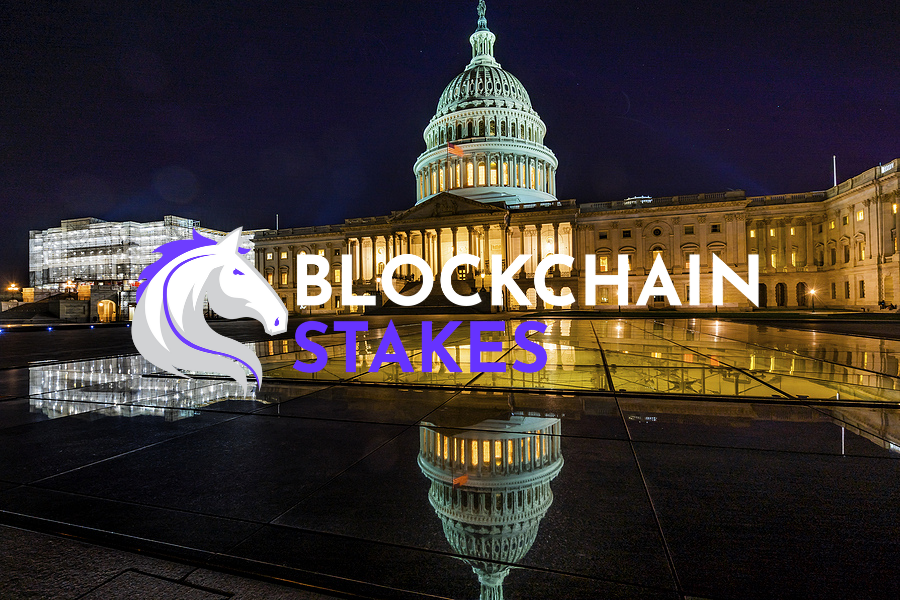Cryptocurrency markets are famously volatile, but one underappreciated factor influencing that volatility is U.S. presidential elections. While it might seem that the world of digital assets and political campaigns are worlds apart, the reality is much more intertwined. Election cycles create shifts in policy expectations, economic uncertainty, and investor behavior—all of which can contribute to crypto market fluctuations. The 2024 U.S. presidential race is already shaping up to have a notable impact on the cryptocurrency landscape, with each candidate offering different approaches toward digital assets.
This post explores how U.S. presidential elections drive crypto volatility, examining political stances, market sentiment, broader economic factors, the crypto industry’s influence on politics, and expert opinions on what lies ahead.
Political Stance and Regulatory Environment
The U.S. political landscape has a profound effect on the regulatory environment for cryptocurrencies. Depending on which party is in power, we could see either a more crypto-friendly or crypto-cautious administration shaping the rules that govern digital assets. As a result, crypto investors and traders closely watch each presidential race to assess how it may influence market dynamics.
Republican vs. Democratic Approaches in 2024
The 2024 U.S. election presents two drastically different approaches to cryptocurrency regulation. On one side, Donald Trump and the Republican Party have become increasingly supportive of cryptocurrencies. Trump has notably shifted his stance since his time in office, now vowing to turn the U.S. into the “crypto capital of the world” and advocating for a national Bitcoin reserve. This pro-crypto rhetoric from the Republican side suggests a potential for fewer regulatory hurdles, which could foster innovation and boost market sentiment among investors.
On the other side, the Democratic stance, represented by Kamala Harris, is more tempered. While the Democratic platform recognizes the importance of digital assets and innovation, it leans toward a more cautious regulatory approach. Harris has stressed the need for appropriate oversight of cryptocurrencies to ensure that they don’t enable financial crime, fraud, or environmental harm. This more restrained view could lead to tighter regulations that slow the industry’s growth, dampening investor enthusiasm.
The contrast between these two approaches is clear: the Republicans’ pro-crypto policies may result in a more favorable environment for digital assets, while the Democrats could prioritize stricter regulations, which could potentially stifle innovation in the short term.
Market Sentiment and Speculation
Political uncertainty often creates market jitters, and this is particularly true in the lead-up to a presidential election. Cryptocurrency markets, like traditional markets, tend to react to investor sentiment shaped by anticipation of future policies and regulations. For crypto investors, the uncertainty of an election can trigger heightened speculation and shifts in trading behavior.
Pre-Election Uncertainty
Leading up to election day, crypto investors often adopt a “wait-and-see” approach. With regulatory policies hanging in the balance, many investors avoid making significant moves until there is more clarity about the future political landscape. This can lead to reduced trading volumes and increased volatility, as traders speculate on the outcomes and potential regulatory changes. For example, rumors about potential crypto bans or restrictive policies could trigger price drops, while optimistic predictions of pro-crypto regulations could lead to temporary spikes in prices.
In the months before the 2024 election, analysts expect to see sharp market swings as investors digest the ongoing political developments. Speculative trading could result in short-term price fluctuations, with many traders positioning themselves based on their projections of the winning candidate and their stance on crypto regulations.
Post-Election “Boom”
However, the post-election period often brings clarity and optimism to the markets. According to analysts like Bruce Ng, the removal of election uncertainty can lead to a significant uptick in the crypto market. “Elections usually clear up speculative uncertainty in the market, so we will see serious ‘moonage’ after the elections in November,” he predicts. Many experts forecast that Bitcoin could surge to $80,000 or even $100,000 after the 2024 election. This anticipated post-election boom is driven not just by political clarity but also by broader factors such as the maturing of the crypto ETF landscape and potential Federal Reserve rate cuts.
Historically, the cryptocurrency market has shown robust growth in the aftermath of U.S. presidential elections. Following the 2020 election, Bitcoin surged, reflecting the market’s optimism about the future regulatory landscape and macroeconomic policies under the Biden administration.
Broader Economic Factors
While the election itself plays a role in shaping the crypto market, it’s essential to consider broader economic factors that can influence cryptocurrency prices. In many cases, these factors may outweigh the direct impact of the election itself.
Federal Reserve Policies and Interest Rates
Perhaps the most significant factor impacting the crypto market in 2024 will be Federal Reserve policies. Interest rate hikes or cuts can greatly influence investor behavior. Cryptocurrencies, particularly Bitcoin, are often viewed as alternative investments or hedges against inflation. If the Federal Reserve continues to raise interest rates, it could create headwinds for risk assets like crypto. On the other hand, if the Federal Reserve cuts rates, as some analysts predict will happen after the election, it could ignite a surge in crypto investments.
Global Economic Conditions
Beyond U.S. politics, the global economy plays a crucial role in shaping crypto prices. Factors such as inflation, international trade disputes, or economic slowdowns in major economies can create ripple effects in the crypto market. Investors should also keep an eye on global adoption trends, as countries like El Salvador and potentially others continue to embrace cryptocurrencies as legal tender, adding another layer of complexity to market dynamics.
Technological Advancements
Another significant factor influencing crypto market trends is technological innovation. Breakthroughs in blockchain scalability, privacy features, and decentralized finance (DeFi) could continue to drive adoption, irrespective of the election outcome. The pace of these advancements could amplify or mitigate the market’s reaction to political changes, creating opportunities for growth even in more restrictive regulatory environments.
Industry Influence on Politics
The relationship between the crypto industry and politics isn’t one-sided. While elections can influence the regulatory environment, the crypto industry is also working hard to shape political outcomes. In recent years, cryptocurrency companies and industry groups have ramped up their lobbying efforts, contributing millions of dollars to political campaigns and action committees. According to some reports, over $190 million has been funneled into political donations ahead of the 2024 election.
This increased political engagement by the crypto sector could yield more favorable regulations regardless of who wins the presidency. Both major political parties are becoming more aware of the importance of cryptocurrencies in the broader economic landscape, and they may adopt more crypto-friendly stances as a result of these lobbying efforts.
By influencing political discourse, the crypto industry hopes to secure a regulatory environment that fosters innovation and protects investors. This growing influence of the industry on the political process may, over time, help reduce the volatility driven by elections, as future administrations could adopt clearer, more stable regulatory frameworks for cryptocurrencies.
Historical Impact of Past Elections on Cryptocurrency Prices
The effect of U.S. presidential elections on cryptocurrency prices has been significant in previous cycles, with market movements often reflecting changes in investor sentiment tied to political outcomes.
2016 Election: Bitcoin’s Quiet Surge
In the lead-up to the 2016 election, Bitcoin was relatively under the radar compared to today. However, Donald Trump’s surprise victory led to a general sense of economic uncertainty, which drove some investors toward Bitcoin as a hedge against volatility. Following the election, Bitcoin experienced a gradual increase in price, climbing from around $700 to over $1,000 by the end of 2016, setting the stage for its massive bull run in 2017.
2020 Election: Bitcoin’s Explosive Rally
The 2020 U.S. election had a more pronounced impact on cryptocurrency markets. In the months leading up to the election, Bitcoin traded around $10,000, with investors cautiously optimistic about the future of regulation. After Joe Biden won the presidency, Bitcoin’s price skyrocketed, reaching over $40,000 by January 2021. This surge was driven by multiple factors, including a shift in market confidence, increased institutional investment, and pandemic-driven fiscal stimulus measures, which led investors to seek out inflation-resistant assets like Bitcoin.
Lessons from Past Elections
In both cases, the uncertainty surrounding the elections caused initial caution in the market, followed by post-election rallies as regulatory clarity improved and macroeconomic conditions evolved. These examples illustrate how presidential elections can trigger both short-term volatility and long-term bullish trends, especially as investors react to shifts in policy, economic sentiment, and global conditions.
As we approach the 2024 election, the historical precedent suggests that crypto markets may again experience heightened volatility followed by a potential post-election surge, depending on the outcome and its impact on regulation.
Conclusion: What to Expect in 2024
As the 2024 U.S. presidential election approaches, the cryptocurrency market will likely experience heightened volatility driven by political uncertainty, speculative trading, and the potential for significant regulatory changes. With the Republican and Democratic parties offering starkly different visions for the future of crypto regulation, the election outcome could have far-reaching implications for the industry.
That said, it’s important to recognize that the broader economic landscape—shaped by Federal Reserve policies, global economic conditions, and technological advancements—will continue to play a crucial role in determining crypto prices. While the election will certainly influence market sentiment, it’s only one piece of a much larger puzzle.
For investors, staying informed about both political and economic developments is key to navigating the volatility ahead. Whether the market experiences a post-election boom or continues to grapple with regulatory uncertainty, the 2024 election will undoubtedly leave its mark on the crypto world.




















